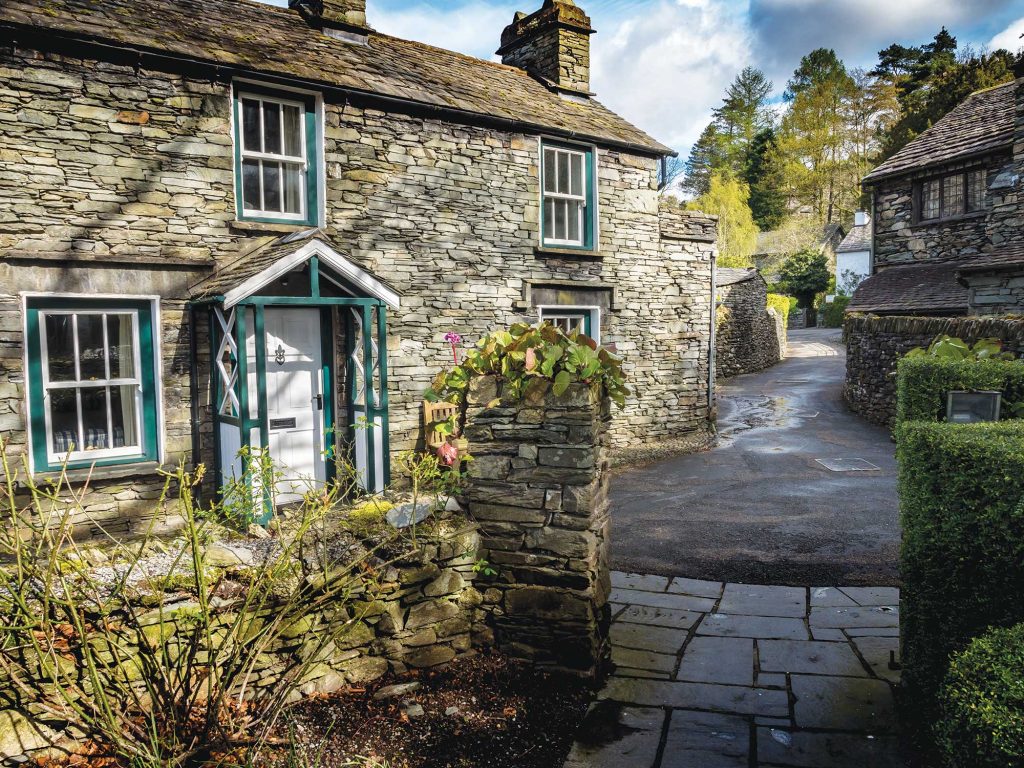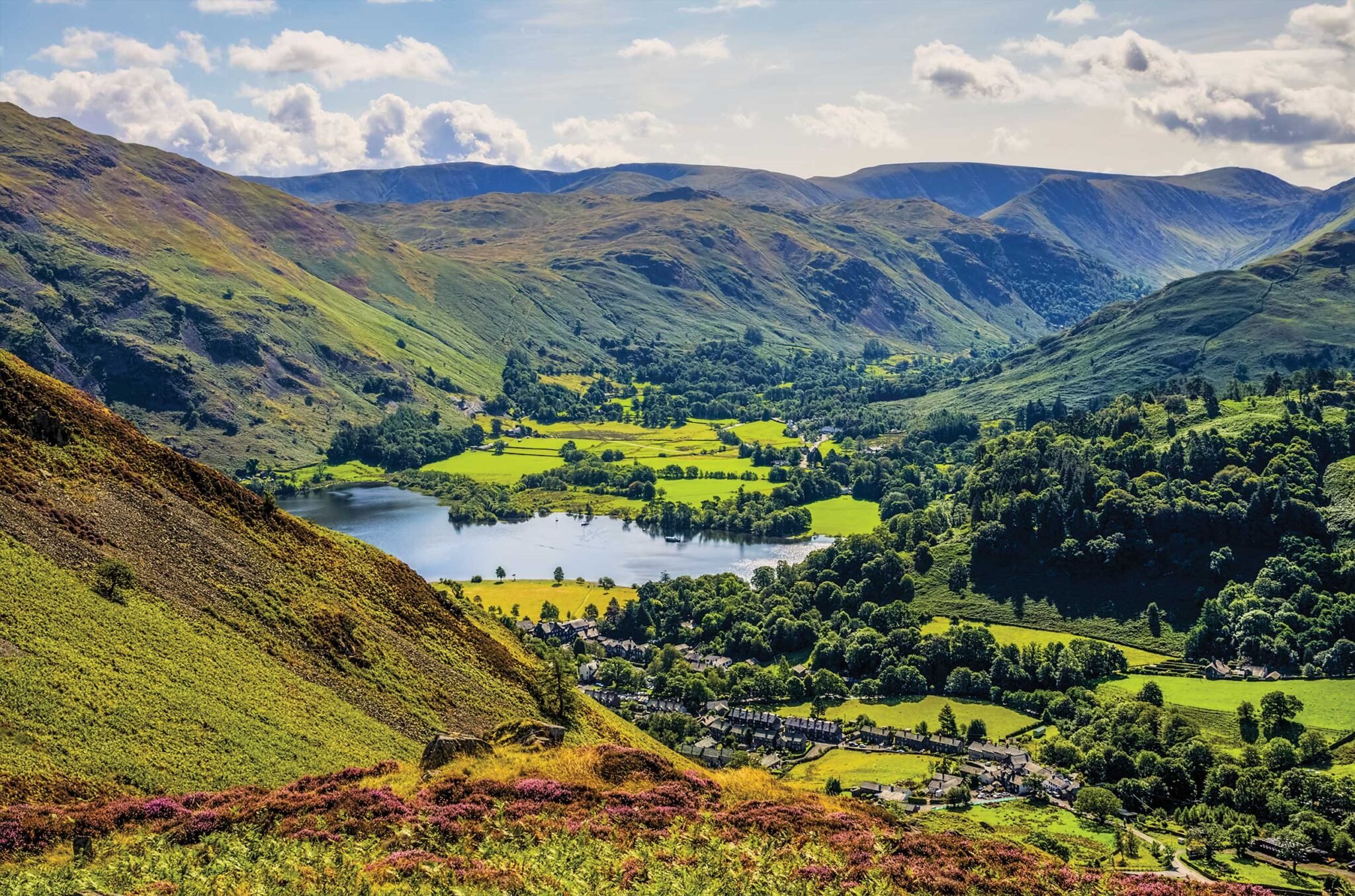Before the pandemic, I would travel at least once a month, typically for business, however some were leisure trips and many combined both. After a year without seeing an airport, I’ve been thinking about travel and reconsidering my priorities.
I count myself lucky. Throughout the pandemic I’ve been able to drive to the beach and to local parks. I’ve watched videos about museums and art, architecture and history, and I’ve read countless books. Still, my thirst for cultural experiences has been difficult to virtually quench. It’s the sights, sounds and smells that I yearn for. It’s the wind in my face or the sun dappling though the trees or the rain dancing on the pavements that creates the sensory experience and imprints the memories. Now I realize that I’m not looking for a beach where I can stretch out with a good book.
I need something else to nourish the other part of me. I am craving culture!
The English Lake District
The Lake District is a national park of outstanding beauty located in Cumbria in the North West of England. It is famous for its lakes, forests and mountains, or fells, to use the local term. Small compared to American national parks, the area is just 912 square miles, and the fells and gentle valleys make for wonderful driving, cycling and hiking. Bordered by hedgerows, ancient lanes that wind their way up the fells, visitors get stunning views across the moorland. For me, renting a car to drive these winding country roads is the best way to explore the history, the stunning scenery and the inspiring regional architecture. The Lake District is home to six Michelin-starred restaurants, including the restaurant ranked number one in the UK by the Good Food Guide 2020. This trip is an experience for all the senses!

The area is intimately associated with English literature of the 18th and 19th centuries. William Wordsworth and Samuel Taylor Coleridge, together with Robert Southey, became known as the Lake Poets.
On this trip, I will follow some of these prestigious writers’ literary footsteps.

The Dream Itinerary
William Wordsworth published his first Guide to the Lakes in 1810. Given his widespread recognition during his career, he was probably the key influencer of the day, inspiring tourists and popularizing the region. My driving tour takes us exploring the little towns and villages in the region, with Bowness-on-Windermere being a great place to start. To get a genuine feel for the place, I walk the main street and along the lakefront to catch a boat ride on the lake.
After a 90-minute trip across the lake, we take a short drive from the lakeside up to Rydal Mount, the home where Wordsworth lived with his family. Wordsworth designed the gardens at Rydal, and he said that those grounds were ”his office” as opposed to the office/writing room in his house. He built the “Writing Hut” where he spent most of his time overlooking the two nearby lakes, Windermere and Coniston. After a tour of the house and grounds, I’m on to the village of Grasmere and to Dove Cottage, where Wordsworth spent over eight years living with his sister Dorothy in what she called “plain living, but high thinking.” This is where he wrote much of the poetry for which he is remembered today, including his famous ode to daffodils, “I Wandered Lonely as a Cloud.”
Next, our literary trip connects us with the life of the poet John Ruskin, who lived at Brantwood house, overlooking Coniston Water. The beautiful house, now a museum, is situated on a steep hill and commands a breathtaking view. There is also a Ruskin Museum in Coniston that covers the history and heritage of Coniston Water.

Ambleside is another village that’s a must-stop on the road. Its unique Bridge House was built over a stream more than 300 years ago as a summer house for Ambleside Hall. An engineering marvel, it is a National Trust building and a great spot for a photo.
We continue further into the Lake District, to the village of Hawkshead, best known as the home of my favorite children’s writer Beatrix Potter, most famous for her 23 children’s tales beginning with Peter Rabbit. With the proceeds from her writing, she bought Hill Top Farm in Near Sawrey in 1905. Over the following decades, the tales of Peter Rabbit and his family enabled her to purchase additional farms to preserve the landscape. Potter died in 1943, leaving almost all her property to the National Trust. She is credited with preserving much of the land that now constitutes the Lake District National Park and with leading what has become modern day sustainable land preservation in the UK.
Hill Top Farm is now a perfectly preserved museum. According to her wishes, it was left exactly as it had been when she lived there. A little-known fact is that she illustrated her books herself. For me, a joyful part of exploring the house is identifying the various scenes that she painted in watercolors for her books.
After a year without travel, this will be the perfect way for me to begin traveling again. Revisiting my favorite part of England as a precursor to new explorations and more cultural adventures.
Getting There, Places to Stay and Places to Eat
Manchester is the closest international airport. A car rental is a must for this trip, and it’s a two-hour drive from the airport to The Lakes.
Hotels
The Samling Hotel, Windermere
Armathwaite Hall, Keswick
Gilpin Hotel, Windermere
Linthwaite House, Windermere
Michelin-Starred Restaurants in the Lake District
L’Enclume, Cartmel
Rogan & Co, Cartmel
Henrock at Linthwaite House
Cottage in the Wood, Whinlatter
HRiSHi at the Gilpin, Windermere
Forest Side, Grasmere
The Old Stamp House, Ambleside
Allium at Askham Hall, Penrith









